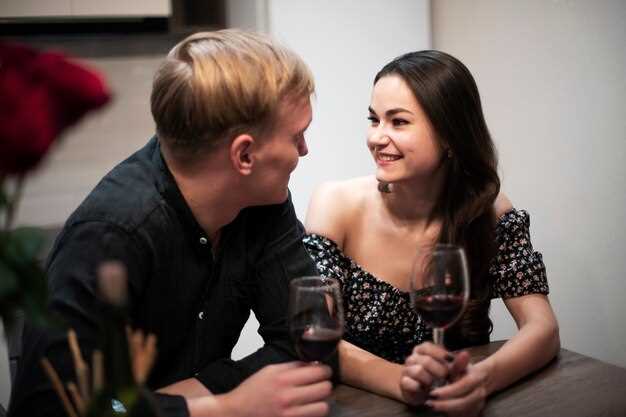Make eye contact and deliver one true compliment within the first moment of meeting someone. Your mindset shapes how you come across, and a genuine expression signals that you are engaged with the person, not simply delivering lines. People remember the content of the moment, and what you say matters. If you were told that small gestures don’t matter, prove them wrong with a calm, confident smile and a natural tone.
Beyond the eyes, let the conversation flow. A single compliment rooted in observation makes the other person feel seen rather than evaluated. When you listen, your body language says more than words: relaxed shoulders, open palms, and a steady tempo show you are engaged. If you’re unsure what to say, think about something you appreciated in them and mention it succinctly in your message.
Self-reflection after a chat boosts your future odds. Note what worked in the last few months: mindset shifts, what made the other person smile, and what caused anxiety to rise. Keep a simple entry on your phone with one sentence about what felt authentic, what felt forced, and what you would do differently. This practice helps you fine-tune matches and stay present during conversations.
Planning the first date with clarity yields better results. For a date, choose a setting that supports conversation, with options in case the vibe shifts. Aim for 60–90 minutes, avoid back-to-back commitments, and offer a flexible time window via the phone so your date feels respected. Share three concrete options in your message rather than a vague suggestion, and let them pick the option that fits best.
When you sense a good connection, keep momentum by sending a short, specific plan within a few days. Reference something they said to show you listened. If you coach clients or guide friends, you know people respond best to authenticity, not a rehearsed script. A content approach, plus a calm breath before you answer, demonstrates that you think before you act and that you care about the other person’s comfort. That tiny moment can set an awesome tone for the evening and pave the way for a lasting connection.
16 Dating Tips for Long-Term Compatibility: From Eye Contact to the Perfect First Date
Tip 1: Express genuine interest from the first moment: steady eye contact, a relaxed smile, and a light physical openness signal warmth that invites conversation.
Tip 2: Prepare open-ended questions that reveal values and long-term aims. If you asked what matters most to them, you’ll gauge alignment and what could work going forward.
Tip 3: Read nonverbal cues; if they look uncomfortable, slow the pace, give space, and avoid forcing topics.
Tip 4: Practice active listening: reflect back, paraphrase, and show you understand them without interrupting.
Tip 5: Align on core values early: discuss family, work, and daily routines to see if your paths could converge with absolute alignment.
Tip 6: When fitness and wellness come up, share your routine with clarity and listen to theirs; these details reveal daily exercise and discipline.
Tip 7: Design the first date as a short, comfortable course with options: a walk, a cafe, or a quick activity to test compatibility.
Tip 8: Keep conversations social and light at first; try a simple dating strategy to test compatibility. If you are interested, look for signals that they want to continue going.
Tip 9: Be clear about your status: if you are single and seeking a meaningful connection, state it with calm confidence, avoiding less pressure and confusion.
Tip 10: Set boundaries early: say what you cant do and what you are not ready to discuss, and respect theirs in return.
Tip 11: Observe how they treat staff and other people; warmth toward each person signals character and practical empathy.
Tip 12: Use images and stories sparingly in early chats; ask for consent before sharing private photos, and keep tone respectful.
Tip 13: Seek feedback from trusted friends or a professional; if someone advises you to adjust pace, consider it and ask clarifying questions.
Tip 14: Treat dating like a sensible business project: set small checks, confirm plans, arrive on time, and follow through with your words while staying warm.
Tip 15: Assess potential by combining values, social life, and future expectations; a clear framework helps you understand compatibility.
Tip 16: End with warmth and a concrete next step if there’s mutual interest; you’ll be sure to keep momentum by proposing a second meeting or a short follow-up activity.
Practical Framework: Flirting with Your Eyes, Planning a Great First Date, and a Post-Date Compatibility Check
Start with intentionality: set a clear objective for the date–find one thing you genuinely want to learn about them and leave with a sense of connection. This keeps you in the moment, improves your mood, and makes doing each step feel purposeful rather than performative.
Flirting with your eyes works best when paired with a warm smile and relaxed eye contact. If you compliment, keep it complimenting and specific, not generic; a targeted compliment about a detail they shared lands better than a broad line. If it feels scary, slow down: natural eye contact and a calm pace bring ease and reduce the sense of pressure. If any line feels unnatural, skip it.
Planning a great first date means choosing a setup that supports conversation. Pick a venue below crowded thresholds: a quiet cafe, a park bench, or a low-key restaurant where you can hear each other. An open, comfortable space helps both sides relax and stay romantic without shouting over noise.
Structure the flow: 60 minutes of talk, a simple shared activity, then a short wrap. This structure continues smoothly if you take notes on what keeps the conversation flowing, and it helps you find content for future topics. Remember to take breaks if you sense tension and adjust to the other person’s pace.
Post-date compatibility check: after the date, take a quick account of highlights and potential alignment. Create a brief notes list: what felt easy, what felt off, what resonates with your dating goals. Your own content grows when you compare how you felt in different situations over the months.
Open a candid follow-up: a short message the next day reinforces momentum. This is an opportunity to learn about each other while keeping the tone open and respectful. Say something like: “I enjoyed our talk about [topic]. If you’re open to it, we could try [low-key activity] again.” This keeps the tone natural and avoids saying canned lines. The approach increases the chance theyre interested without pressure.
Account for months of practice: the more you do, the better you find your dating rhythm. Treat each date as a data point in a low-stakes business of relationships; document below the surface signals, like humor match, energy, and pace. This purposeful approach comes from intentionality and grow your confidence.
Content notes: keep an account of the mood, what felt natural, and what felt forced. If you find a potential match who shares your pace and a romantic vibe, you know you found something worth pursuing. The goal is to stay open and intentional, not to chase perfection.
Eye Contact Signals: Subtle Flirting Without Words
Hold eye contact for 3-4 seconds during a question, then break gaze briefly and smile to keep the mood relaxed; this light look, driven by intentionality, signals invested interest without pressuring them, which makes a first-date conversation easier.
In this case, look for signs that the other person is connected: steady mutual gaze, a soft smile when you listen, and a posture that mirrors yours; this comes from a comfortable vibe, showing a real connection. Told by many, this approach stays respectful.
Intentionality guides your tempo: keep the gaze at a pace that feels natural, which signals an absolute sense of confidence and invested interest; as said by experts, use eye contact as a tool, rather than a test, rather small and supportive.
More ways to use eye contact without words: blend looking, glancing, and brief breaks; this approach aligns with the other person’s mood and reinforces the connection, because small things add up and carry much warmth.
Long-term practice pays off: in this case, when a connection can grow, eye contact becomes a shared language that helps both people feel heard; if you’re on a first-date, this can lay an awesome groundwork.
Check-in during the date: if they hold your gaze and lean closer while you speak, keep going with a gentle rhythm; if they look away quickly, switch to lighter contact and pivot to words; gosh, you’ll know when to move forward, and you can try again later.
Practice tips outside dates: rehearse brief eye-contact intervals with a friend or in front of a mirror; the more you rehearse, the more confident you feel, which makes each first-date opportunity feel natural and awesome.
Lenguaje Corporal y Confianza: Postura, Proximidad y Microexpresiones
Párate erguido con los hombros hacia atrás y la barbilla nivelada. Esto hace que tu silueta sea abierta y señale confianza. En entornos sociales con solteros, durante charlas en persona, o cuando planeas una cita, tu postura sirve como una señal clara de que estás presente y listo para interactuar antes del próximo movimiento.
El contacto visual importa. Mantén una mirada cálida, interrumpe ocasionalmente para evitar mirar fijamente, y deja que una sonrisa suavice tus rasgos. Si alguien te hace una pregunta, responde con un asentimiento y una expresión relajada para mostrar que estás escuchando y participando.
- Postura: Mantén los pies separados a la anchura de las caderas, la columna neutral y el pecho abierto. Esta postura te hace parecer equilibrado y accesible; evita encorvarte o cruzar los brazos, lo que puede indicar distancia. Si te sientes tenso, exhala y baja los hombros para restablecer tu vibra.
- Proximity: Start with about an arm’s length; gauge comfort and adjust. If they lean in, you might slightly reduce distance to show interest; if they lean back, give space. This plan helps you stay in sync and avoid awkward moments together.
- Micro-expressions: Watch for tiny cues–eye movements, a genuine smile that reaches the eyes, or a brief brow lift. This says you’re following along and ready to respond. If you detect unnatural tension, ease facial muscles and respond with a light nod to keep the contact warm and romantic.
On in-person meetups or during phone calls, keep the same energy: posture, pace, and listening contact shape the vibe. If you are finding someone interesting online, plan ahead to meet in person; this helps read micro-expressions live and decide your next move with clarity.
Conversation Craft: Open-Ended Prompts, Active Listening, and Energy Matching
Starting with an open-ended prompt that invites a story and feelings sets a friendly tone. whats been getting your mind excited lately? This approach pulls interests to the surface and helps you gauge their vibe without pressure. When you talk in-person, maintain warm eye contact and a relaxed posture to show you are here with them.
Active listening means giving your full attention, reflecting back what you hear, and asking a follow-up that connects to their interests. If they mention a favorite holiday memory, acknowledge the feeling and ask for a detail that reveals their personality. Use giving space between thoughts and avoid interrupting; that keeps the connection between you and them strong.
This approach advises you to stay curious. Weve found that one small, precise prompt can reset the mood if a moment took a wrong turn. Always listen for the subtle cues in their tone and adjust your reply accordingly.
Energy matching keeps the flow natural. Notice their pace, tone, and reaction. If their energy is high, you can match with a playful, cute note or a quick share of a related story. If the mood isnt as high, tone down a notch, slow down, and show you are interested. Avoid forcing topics; instead, pivot to something that aligns with their interests or social vibe. That balance helps you stay in sync and increases the chance to turn a chat into a real in-person date. Between prompts, give them space to lead and read the room for the next move.
To keep momentum across the course of dating, use prompts that reveal what they are curious about and what kind of connection they want. Keep your responses tight, and value their pace; this helps you build a natural rhythm and reduces misreads between you two. When you sense a good match, propose a simple, in-person plan that respects pace and comfort.
| Prompt | Response Tip | Energy Cue |
|---|---|---|
| whats been getting your mind excited lately? | Echo the feeling, then ask a follow-up about a related interest or a favorite activity. | Smile, nod, and keep pace; if they dive in, extend the thread. |
| whats your favorite holiday memory? | Describe the scene and the feeling; connect with a small detail you notice in their voice. | Maintain warmth; if they brighten, deepen the prompt. |
| what kind of in-person activity would you enjoy? | Offer two easy options and invite a preference; confirm a simple plan that feels comfortable. | Equipara la energía con su elección; si optan por participar, fija una hora. |
Planificación de citas: Selección de un entorno cómodo y establecimiento del ritmo
Elige un café tranquilo con asientos cómodos y luz tenue para empezar; sentirás que la conversación fluye con facilidad. Si prefieres la estructura, un toque de cadencia alemana –un inicio claro, un final claro– mantiene la cita cómoda y predecible.
Adapta la conversación a su ritmo y respeta la dinámica principal. Cuando seleccionas el entorno, los tienes en cuenta y dejas que lideren. Si intercambiaste perfiles en aplicaciones, puedes expresar interés en temas que revelen más sobre su experiencia. Este enfoque hace que la cita sea más humana y ayuda a que la conexión crezca en febrero.
Los entornos prácticos aumentan la comodidad: un café cálido, una librería tranquila o un breve paseo por la galería con un café al final. La regla es simple: elige un espacio que facilite la conversación y te permita sentir la energía de la otra persona. Si el ambiente es agradable, propón un siguiente paso ligero; esa es una señal para reducir la velocidad y mantener los planes menos estrictos.
El lenguaje corporal importa. Si se inclinan hacia adelante, mantén el ritmo; si se retraen, cambia de tema. Un antebrazo relajado sobre la mesa indica apertura; respeta su espacio y evita aglomeraciones. Si no estás seguro de su comodidad, haz una pregunta suave y ajústate. Observa algo pequeño, como una sonrisa o un asentimiento, para guiar el siguiente movimiento. Esa conciencia hace que la experiencia sea más fluida y te ayuda a ajustarte rápidamente.
Usa aplicaciones para coordinar un momento y compartir el plan, pero mantén el diálogo real. Propón una o dos cosas que harás y deja espacio para adaptarte. Simplemente pregunta qué prefieren y expresa flexibilidad; esa actitud reduce la presión y te ayuda a sentir cómo la conexión se siente más natural. Pronto verás la realidad de la relación y qué hacer a continuación.
Mientras planificas, recuerda esto: establecer el ritmo es un ejercicio práctico que crece con la práctica. El objetivo es asegurar que ambos se sientan seguros y valorados; esto mejora la posibilidad de una segunda cita y la realidad de la relación que quieres construir. Tenlos en cuenta, y si alguien no está comprometido, termina cortésmente e inténtalo de nuevo más tarde con un ritmo o entorno diferente.
Revisión posterior a la cita: 8 preguntas para evaluar la compatibilidad a largo plazo
Establezca una charla enfocada de 60 minutos y responda estas ocho preguntas antes de planificar el siguiente paso.
1) ¿Se alinean nuestros intereses en temas centrales como metas, familia y pasatiempos? Compara cómo describes tus intereses; la parte más informativa es cómo los expresas bajo preguntas calmadas. Tu relato debería mostrar consistencia, y ellos han declarado claramente lo que les importa, lo cual te ayuda a calibrar una posible afinidad.
2) ¿Nos comunicamos bien, especialmente en entornos como la cena y otras conversaciones? Observa el tono, el ritmo y si cada persona se siente escuchada. La otra persona dice que valora el diálogo abierto, y la forma en que una conversación continúa después de una pregunta indica actitud y disposición para trabajar juntos. Si las respuestas se sienten auténticas, esa es una señal fuerte; si no, anótalo para una comprobación posterior.
3) ¿Compartimos puntos de vista compatibles sobre el dinero, el tiempo, la independencia y las rutinas diarias? Comparen cómo planean cada uno una semana típica; ambas partes deben sentirse capaces de respetar el espacio y los objetivos compartidos. Han demostrado coherencia en la planificación de la rutina, lo que reduce la fricción y les ayuda a ver si el día a día puede encajar en los planes a largo plazo.
4) ¿Cuán mentalmente presentes estamos el uno con el otro y manejamos los desacuerdos de manera constructiva? Presta atención a la escucha, la paciencia y si puedes estar en desacuerdo sin descarrilar la conexión. Un terapeuta sugiere rastrear patrones durante varias conversaciones, no un solo momento, para que el ciclo de retroalimentación abierto siga siendo constructivo a medida que avanzas. El resultado destaca la resiliencia en la dinámica.
5) ¿Estamos emocionalmente involucrados y somos capaces de repararlo después de los conflictos? Busca disposición para abordar los problemas en lugar de evitarlos. Si una de las partes no puede reconocer sus errores o desvía la culpa, eso indica un camino difícil por delante. Esta verificación te ayuda a evaluar cuánto trabajo están ambos dispuestos a invertir y cuán involucrados se sienten en el caso de un futuro juntos.
6) ¿Compartimos dinámicas sociales, como círculos de amigos y expectativas familiares, y nos sentimos cómodos planificando juntos? Incluya pruebas prácticas como reunirse con un amigo o coordinar un plan de cena sencillo. Si tienen un fotógrafo o han compartido muchas actividades grupales, eso destaca la compatibilidad abierta y una colaboración más fluida para eventos futuros.
7) ¿Podemos ponernos de acuerdo sobre el ritmo y los tiempos futuros, incluyendo la frecuencia con la que salimos y cómo planeamos los grandes pasos? Esto verifica si ambos quieren avanzar a un ritmo similar. En el futuro, los pequeños pasos continuos mantienen el impulso, reduciendo las diferencias en las expectativas y asegurando que permanezcan conectados sin presión.
8) ¿Buscamos crecer juntos y tenemos un plan para apoyo continuo, como capacitación en comunicación o buscar ayuda profesional si es necesario? Esta revisión final vincula la actitud, la apertura y una mentalidad de visión a largo plazo. Trabajar en ello juntos demuestra que buscas una mejora continua y que estás dispuesto a invertir tiempo y energía en una conexión duradera.

 16 consejos esenciales para citas: desde coquetear con los ojos hasta planificar la primera cita perfecta">
16 consejos esenciales para citas: desde coquetear con los ojos hasta planificar la primera cita perfecta">


 Cómo leer Atracción secreta: una guía completa, un resumen y una reseña">
Cómo leer Atracción secreta: una guía completa, un resumen y una reseña">
 El futuro de las citas: cómo los algoritmos impulsan las aplicaciones de citas">
El futuro de las citas: cómo los algoritmos impulsan las aplicaciones de citas">
 No te separes – Un argumento convincente para permanecer juntos">
No te separes – Un argumento convincente para permanecer juntos">